| Weight | 1 lbs |
|---|---|
| Dimensions | 9 × 5 × 2 in |
| host | mouse |
| isotype | IgG |
| clonality | monoclonal |
| concentration | concentrate, predilute |
| applications | IHC |
| reactivity | human |
| available size | 0.1 mL, 0.5 mL, 1 mL concentrated, 7 mL prediluted |
rabbit anti-Brachyury monoclonal antibody (ZR391) 6035
Price range: $160.00 through $528.00
Antibody summary
- Rabbit monoclonal to Brachyury
- Suitable for: Immunohistochemistry (formalin-fixed, paraffin-embedded tissues)
- Reacts with: Human
- Isotype:IgG
- Control: Chordoma
- Visualization: Nucleus
- 0.1, 0.5, 1.0 mL concentrated, 7 mL prediluted
rabbit anti-Brachyury monoclonal antibody ZR391 6035
| target relevance |
|---|
| Protein names T-box transcription factor T (Brachyury protein) (Protein T) |
| Gene names TBXT,TBXT T |
| Mass 47443Da |
| Function FUNCTION: Involved in the transcriptional regulation of genes required for mesoderm formation and differentiation. Binds to a palindromic T site 5'-TTCACACCTAGGTGTGAA-3' DNA sequence and activates gene transcription when bound to such a site. {ECO:0000250|UniProtKB:P20293}. |
| Subellular location SUBCELLULAR LOCATION: Nucleus {ECO:0000269|PubMed:22611028, ECO:0000269|PubMed:24253444}. |
| Tissues TISSUE SPECIFICITY: Detected in testis, but not in other, normal tissues. Detected in lung tumors (at protein level). {ECO:0000269|PubMed:22611028, ECO:0000269|PubMed:30237576}. |
| Structure SUBUNIT: Monomer. {ECO:0000250|UniProtKB:P20293}. |
| Involvement in disease DISEASE: Neural tube defects (NTD) [MIM:182940]: Congenital malformations of the central nervous system and adjacent structures related to defective neural tube closure during the first trimester of pregnancy. Failure of neural tube closure can occur at any level of the embryonic axis. Common NTD forms include anencephaly, myelomeningocele and spina bifida, which result from the failure of fusion in the cranial and spinal region of the neural tube. NTDs have a multifactorial etiology encompassing both genetic and environmental components. {ECO:0000269|PubMed:15449172, ECO:0000269|PubMed:30237576}. Note=Disease susceptibility is associated with variants affecting the gene represented in this entry.; DISEASE: Chordoma (CHDM) [MIM:215400]: Rare, clinically malignant tumors derived from notochordal remnants. They occur along the length of the spinal axis, predominantly in the sphenooccipital, vertebral and sacrococcygeal regions. They are characterized by slow growth, local destruction of bone, extension into adjacent soft tissues and rarely, distant metastatic spread. {ECO:0000269|PubMed:19801981}. Note=Disease susceptibility is associated with variants affecting the gene represented in this entry. Susceptibility to development of chordomas is due to a T gene duplication.; DISEASE: Sacral agenesis with vertebral anomalies (SAVA) [MIM:615709]: A disorder characterized by abnormalities of the spine, including sacral agenesis, abnormal ossification of all vertebral bodies, and a persistent notochordal canal during development. {ECO:0000269|PubMed:24253444}. Note=The disease is caused by variants affecting the gene represented in this entry. |
| Target Relevance information above includes information from UniProt accession: O15178 |
| The UniProt Consortium |
Data
 |
| Formalin-fixed and paraffin-embedded human chordoma stained with anti-brachyury antibody using peroxidase-conjugate and DAB chromogen. Note the absence of nuclear staining of tumor cells. |
Publications
| pmid | title | authors | citation |
|---|---|---|---|
| We haven't added any publications to our database yet. | |||
Protocols
| relevant to this product |
|---|
| IHC |
Documents
| # | SDS | Certificate | |
|---|---|---|---|
| Please enter your product and batch number here to retrieve product datasheet, SDS, and QC information. | |||
Only logged in customers who have purchased this product may leave a review.
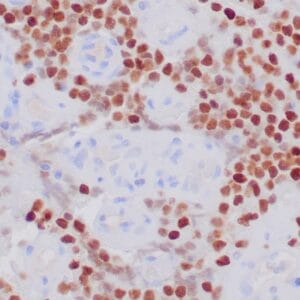
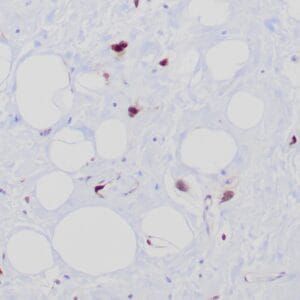
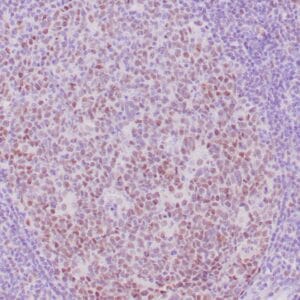
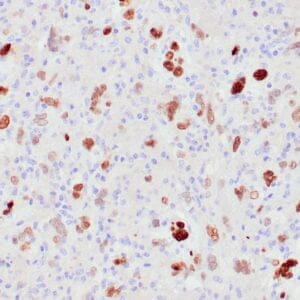

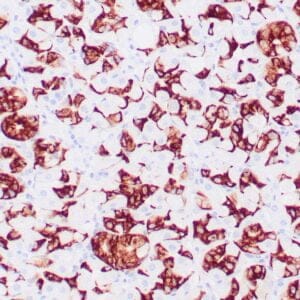
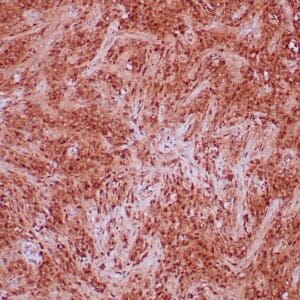
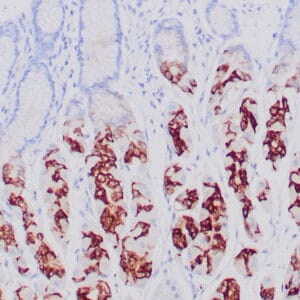
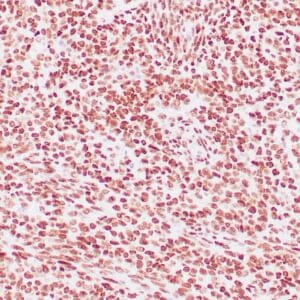
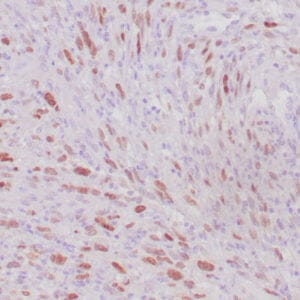
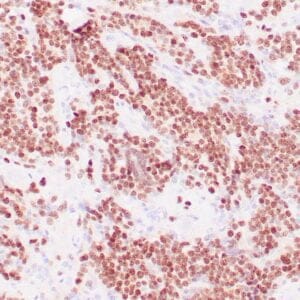
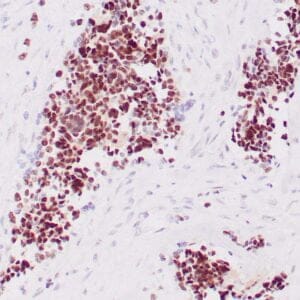

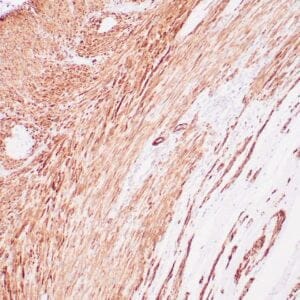
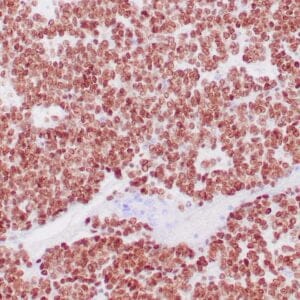
Reviews
There are no reviews yet.